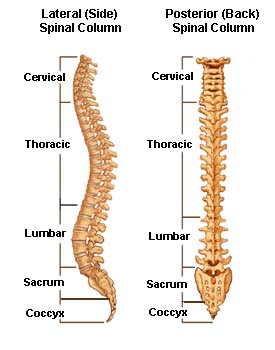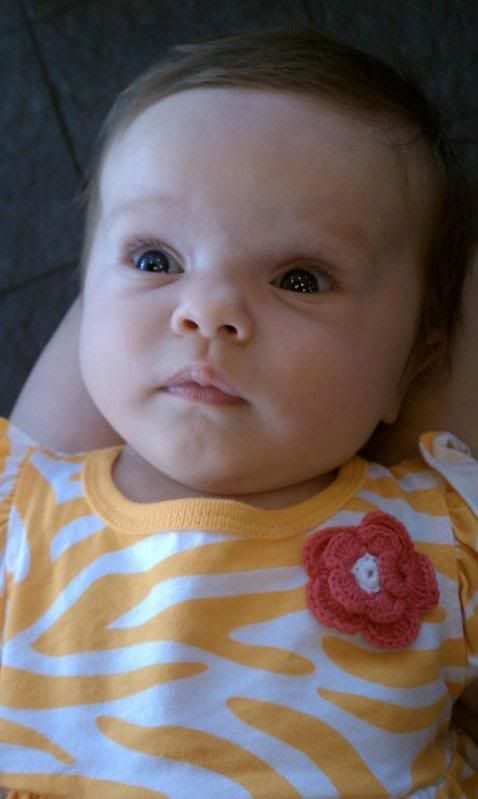And so… finally. How was Delaware?
It was amazing.
It began with me missing the exit, and ended with me in tears at Saladworks.
In the middle, I suppose, is what you want to read about.
We got up early on Thursday morning and prepared ourselves before dressing Addie in her finest romper (read: simple to get her in and out of). I must have been incredibly nervous, because I didn’t take one picture. Not a single one.
Once we were in my mom’s minivan, I set the GPS and headed to the closest Dunks. We loaded up on coffee and jumped on the PA Turnpike. My hands were sweaty, despite the chill in the air, and the drive went well. It turns out that Wilmington is only 70, or so, minutes from my parents’ house. Even missing an exit, we still got to the appointment early. We arrived and were directed to the clinic, where we were welcomed with smiles and open arms. But, enough of that- onto the meat:
We learned a lot of things in our 80+ minute meeting with Dr. Bober and his assistant, Angie Duker. These were the thoughts I’d had just the day after our trip about our experience so far:
We arrived at the train station just 15 minutes before we had to board. It was perfect timing. As we ran in through the thick drops of drizzle, Dave grabbed some milk for the coffee we had made, and we waited for the All Aboard to flip up on the Amtrak screen. We loaded ourselves onto the train; baby, suitcase, duffel bag, diaper bag, toy bag, lunch bag, milk cooler bag and car seat. Once settled in our seats, Addie took her bottle of milk. We pulled into Penn Station in New York a few hours later and I moved into a window seat. As we pulled out, Addie looked out the window, then back at me. Belly-to-belly, she plopped her head down on my chest and fell asleep for her nap. Right on time.
She awoke, her noggin popping up with a smile plastered across her face. Then a frown. Time to eat! Addie chowed down her milk and then happily cooed and spit for a while.
She was wonderful the whole ride; following her nap and eating schedules as usual- and making do with having to sleep wherever- including on my legs.
Then it was Thursday, October 11. The day began like the rest had in the previous week. I was up at 4:30am, unable to sleep through the night since receiving my copy of the sleep study. Mild disordered sleep. What did that mean?
As Dr. Bober reviewed all the papers I had so carefully sorted (Medical Records, Birth Records, Early Intervention, Genetic Testing, Skeletal Survey and Results, Growth Charts), I was still nervous. Finally, he asked Dave and me what we knew about achondroplasia. I froze. What didn’t I know. I said a few things and he stopped me. We reviewed my biggest fears, from central sleep apnea to decompression surgery and hydrocephalus. We talked about milestones (I have some new charts… I will make a page for them!) and we discussed sleep. While Dr. Bober was not concerned, he did tell me to just keep an eye on Addie and if I notice any changes in her sleep to contact him. However, as of October 15th, when we went to the sleep specialist in Boston, we are scheduled for a second sleep study in March. The sleep specialist would like to see her central sleep apnea occurrences a little lower than they are. Who knew one person could need so many doctors, yet be deemed healthy?
Beyond that, we reviewed Addie’s soft spot and it’s measurements. We were told what to look out for and that a little bit of extra fluid is common, but nothing to worry about. We were told to feel her soft spot once a week. I check every night.
Dr. Bober also talked about spinal stenosis, and the difference between it being a feature of dwarfism and critical. I felt relieved to know that Addie doesn’t present with any signs of critical stenosis, but knowing that the first 24 months of life are where hydrocephalus, bowing and stenosis will most likely show up in childhood, I feel like I’m having a private countdown while I should be enjoying each day, I am bombarded with looking and checking and feeling and testing.
I know. I need to relax.
Then, we moved onto examining Addie: 23 3/4 inches, 14 pounds 2 1/2 ounces and a head circumference of 17.8 inches!
She can’t straighten her arms all the way, which is just another feature of dwarfism that many people have, and, after reading the doctor’s notes (sent to me in less than 3 weeks!), she shows some signs of bowing (bilateral genu recurvatum). Yes, I looked that up- as well as over 10 other “musculoskeletal” notes about appearance. We will be seeing Dr. MacKenzie in April, as well, and he will probably have more to say about that then.
There really wasn’t bad news, per se-,but there were some things to look out for and preventative measures that need to be taken. For instance, a common issue with achondroplasia is kyphosis. Addie presents with lower lumbar kyphosis (when you hold her, you can feel her spine stick out in her lower back):
The fear with this is that in the lumbar region of your spine, your bones sit parallel. If your spine curves the opposite way, the bones will grind into each other, causing the bones in the spine to break and look “bullet-shaped”, instead.
When we hold Addie, we need to provide full back support. That includes when she is up against our chest, applying slight pressure to the base of her spine to help straighten it out, and when she is in our lap, letting her lean against us. Anything she sits in needs to be a hardback, allowing her to conform to what she sits in and not the other way around.
Sadly, this limits our carrier time to never. I had always imagined myself a baby wearing mama, but having a healthy baby means more- and so, my arms are always full and so is my heart!
What IS good for her, however, is tummy time, as it brings her back into an arch… which is great! She is a happy camper on her belly, for the most part, and (as of October 27th) if she doesn’t want to be on her back, she rolls to her belly = A total baby-body workout!
Some more interesting facts:
* Due to the shape of the ribcage, the liver is [usually] able to be felt. This is not true on an average height child, which is something to alert doctors of should they have a concern. Sometimes, it is falsely interpreted as a swelling.
* Addie’s arms do not fulling extend by about 20% at the elbow. This is totally normal, and should not inhibit her in any way. She does have lower muscle tone, primarily in her arms, but that is just another feature of dwarfism. As well, her limb disproportions were noted in her arms as rhizomelic, and her lower extremities are rhizomelic light. This refers to her arms as short (the long bones) and her legs as mildly (for a dwarf) short. She will, most likely, be around 4 feet tall.
* The diagnosis of achondroplasia could have been made with ONE x-ray of her pelvic bone! The blood test, however, confirms it.
* Dr. Bober feels Addie is doing great! (This is my favorite fact!)
And so, this is how Delaware went.
We met with a great family when our appointment was over, there were lots of smiles and handshakes and then we were leaving… and I was shaking. I was gripping Addie so close to me I could feel her little Buddha-belly flatten against me.
Dave and I decided that we had not eaten, and so we needed to get food in Delaware. (If you’ve ever seen me hungry, you know it’s a sight better left for horror films and psychiatry studies.) We made a left out of the hospital and came across a Saladworks- one of my favorite places to eat. We walked in and parked ourselves at a table after glancing at the menu. I knew what I wanted, and as I told Dave I looked over at Addie. Perfect. Small. Addie. And I grabbed Dave, locked myself in his grasp and cried into his shoulder. I cried for the relief that Addie is OK. I cried for the fact that she will have struggles. I cried because I have not slept through the night since she was born.
We learned a lot, and we will continue to learn. Thank you for taking this journey with me as a woman, as a mom, as a parent, as a friend.

















